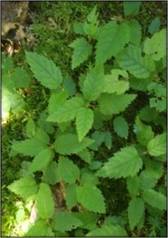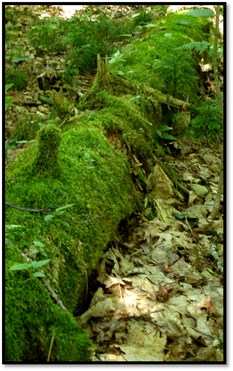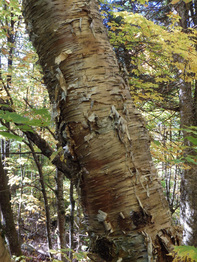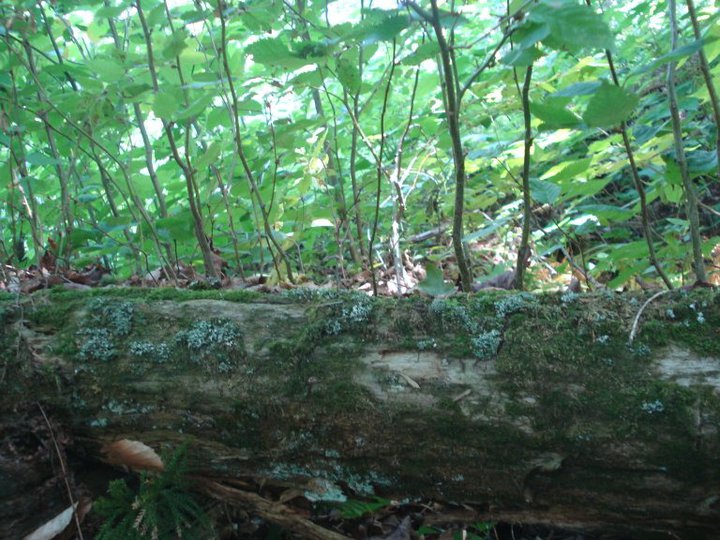 Yellow birch seedlings. Photo: J-B Lambert
Yellow birch seedlings. Photo: J-B Lambert A study recently published, in which FiDBosc participates, tries to answer these questions. The leading author, Jean-Bastien Lambert (UQAM, Canada) sampled more than 1,000 yellow birch juveniles in hardwood forests of southern Quebec, recorded the substrate in which they were growing, and measured their height, growth, morphology, light availability and several other physiological variables.
 A nurse log, and adequate substrate for yellow birch seedlings
A nurse log, and adequate substrate for yellow birch seedlings But seedlings growing on deadwood also had different characteristics than those growing in mineral soil. For instance, they had slower height growth, greater number of living branches and a more efficient resource capture, which are all characteristics that promote shade tolerance. And indeed, we found that regeneration cohorts did not follow the same temporal pattern of establishment on different seedbed types, and advanced regeneration were more numerous on deadwood. In fact, we found that yellow birch has the potential to establish almost continuously if adequate deadwood are available, and can persist for more than 20 years in the understory as seedlings or saplings.
 Yellow birch has a characteristic golden bark
Yellow birch has a characteristic golden bark You can find the study published online at Canadian Journal of Forest Research.
Reference: Lambert J-B, Ameztegui A, Delagrange S, Messier C. (2015) Birch and conifer deadwood favour early establishment and shade tolerance in yellow birch juveniles growing on sugar maple dominated stands. Canadian Journal of Forest Research. In press.


 RSS Feed
RSS Feed
